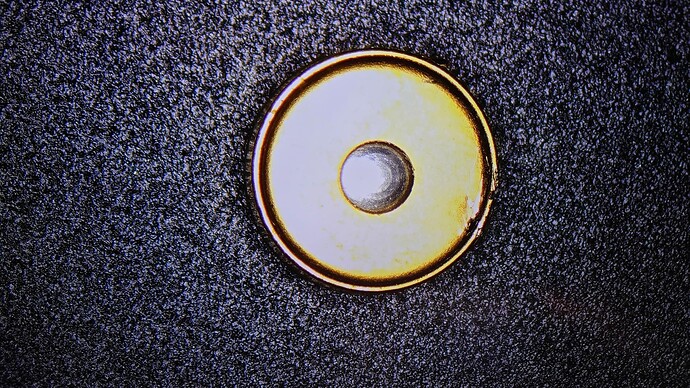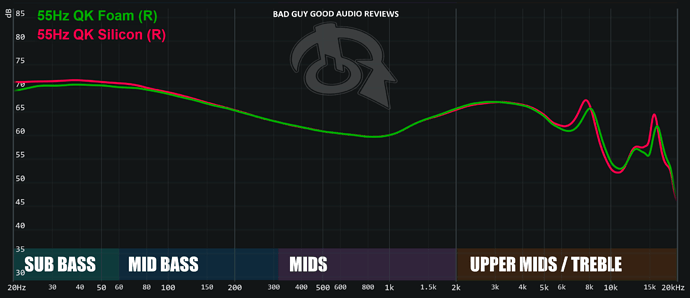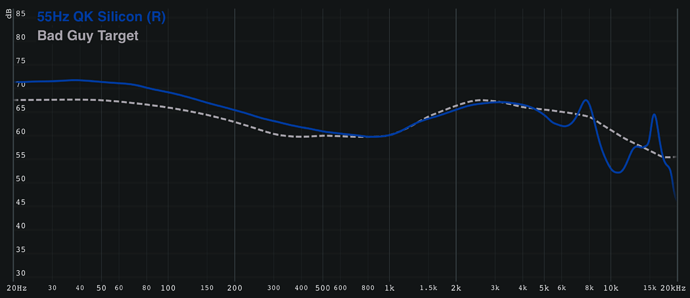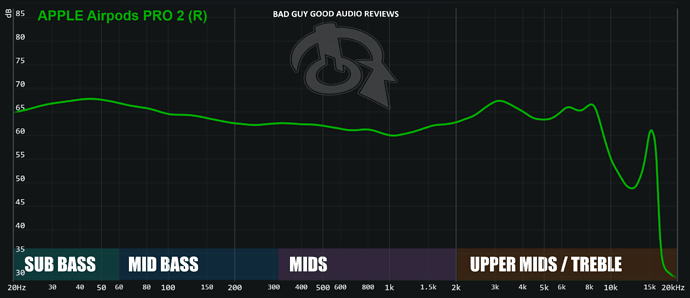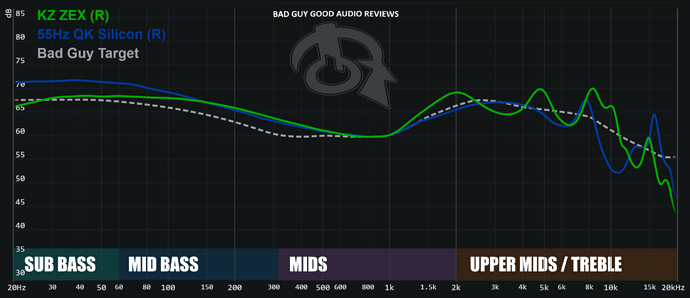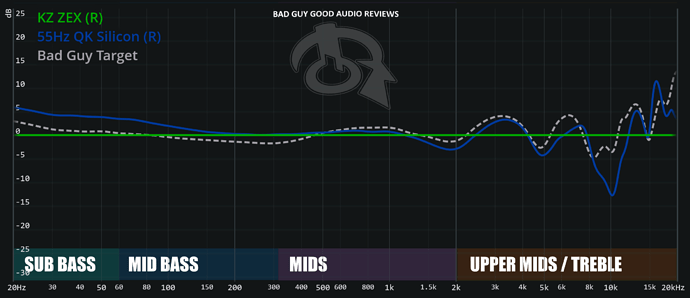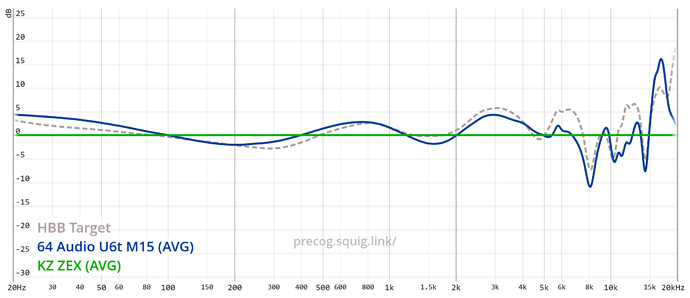Pretty much. Shame calyx isn’t around anymore
Quick disclaimer, I am not the most technical person, I just listen to stuff and share my experiences, so I’m sorry if this is a mess of an explanation lol,
I guess to some extent, although more drivers doesn’t equal better either, there’s a point where cramming more in there is detrimental to some extent
But that’s an apples to oranges comparison. BA drivers are inherently limited as full range drivers, and basically designed at this point to be used with multiple drivers, and (most) iem with multiple ba use a crossover network to assign drivers to cover a specific range of the iem (which requires masterful crossover design, shell/enclosure design, and quality drivers to sound coherent imo). So they are by design typically supposed to be in multiple driver configurations. What’s the ideal number of drivers or type or configuration? I have no idea, but I do know that single ba iems have sucked from my experience, I guess the er4xr is great but that’s more an outlier than an exception, there’s a reason why most all BA iems these days have more than one. Side note, more drivers can also come with drawbacks. Quick speaker comparison, but some of the tightest imaging I’ve heard has come from single driver speakers, when you introduce multiple drivers, you now have to make sure those drivers are time aligned and don’t fuck up the time domain which imo is pretty critical for accurate spatial recreation in general. Not iem related, but I haven’t really spent as much time with iem design than I’ve seen with speakers. All depends on how well those multiple drivers are implemented.
Now, when it comes to dacs, the chips are designed to be perfectly capable on their own and not require multiple chips for different frequency ranges, they are designed to be the whole dac, not part of a dac. From a spec perspective, going from 1 single chip to dual chips does improve crosstalk and dynamic range and be easier on the output stage, but if that’s actually audible depends. If you’re talking fully dual mono as in each chip with it’s own separate psu and output stage that’s a different story because now you’ve brought in other aspects of the dac’s design to influence that sound. It’s not always all positives though, because now you have added cost and complexity in the design, you have to make sure that the clocking between the 2 chips is exactly the same and also make sure they are balanced level wise on each channel, and might also cause some complications when it comes to the output stage and the input digital stage, all also depending on if this is full dual mono or not. Also with multiple chips, generally it’s a good idea to keep your signal traces/runs as short as possible, which is now likely longer than a single chip. But in theory, there’s more upsides than downsides I’d say from what I’ve gathered.
Another potential benefit to multi chip designs is that you can now have fully differential dacs with balanced output into their output stage, so if you want to, 2 dacs per channel, one dedicated to the plus and minus for each channel, so 4 total, but that’s dual differential and not just differential since iirc this can be achieved with just 2 chips, one per channel using the 2 channels of said dac. Or modern chips with multiple channels could do this in one. Like always there’s potential downsides to doing any of these as well (some mentioned above, some new, and plenty for all of these that I missed).
When you get into more chips than that, you’re likely going for a parallelization approach (which is what the dac I mentioned beforehand used, an aries cerat kassandra ii ref), but that’s more common on chip ladder dacs (to increase linearity, reduce quantization error, increase basic specs and decoding potential, decrease distortion, change the driving characteristics in current mode, etc) rather than sigma delta so it’s not as commonly done (I guess you might reduce the potential strain on the output stage and less noise and get a few extra spec bumps, but there’s a reason you don’t see many parallelized sigma delta dacs but a ton of parallelized ladder chip dacs)
Main point being, comparing a transducer to a dac chip isn’t really comparable, adding more is done for a fundamentally different reason (sure, you could say that more evenly distributing the workload is a shared commonality, but you get what I mean), and there’s many equally valid and worthwhile ways to go about dac design (and this is only talking sigma delta chip based designs). And there’s a lot more going on inside a dac than an iem admittedly that can greatly influence the sound and it’s performance (doesn’t mean they are any less difficult to design, although I’d argue it’s likely easier to make an amazing sounding iem than a good sounding dac, but no clue, I couldn’t design either lol just guessing off my own experiences). There are tradeoffs to any design, sometimes easily spotted and sometimes not. And also, you know, one of them is converting digital information to a low level analog signal, and one of them is converting an analog signal to mechanical energy aka sound our ears can hear lol, so that’s another big difference.
There IS one dac I have tried that actually did use different dac chips for different frequency response regions (from what I could gather), and that was a waversa wvdac mkii. IIRC, it would basically jump through many digital processing hoops with quad ess chips to separate different frequency bands for the different chips and channels with those chips, than recombine them at the end? I genuinely have no idea what they were doing, their explanations were fairly cryptic. The dac was super impressive, although I did feel like the way it staged was somewhat as cryptic as the marketing/explanations, it was really cool, but not realistic, but I can see it being amazing for some. Great dac, but wasn’t for me, anyways beyond the point, main reason I brought it up was because that was an edge case where a mfg used dac chips almost like ba (but even then it’s still a stretch).
I guess in one sense I could agree with you when it comes to 2 chip dual mono being best in theory, but really it’s more only because some of my favorite sigma delta dacs have that configuration (berkeley alpha reference 3, bricasti m1se, and pacific microsonics model 2, all of them funnily enough happen to use 2 ad1955 chip (perhaps not the PM), and all sound pretty different from each other lol), so I can at least see a trend. IMO some of the best DAC mfg have at least minimum dual chip/dual mono designs for sigma delta designs (although recently my favorite sigma delta dac would likely be the lampizator horizon, but no clue what that uses outside of that it is sigma delta). If you were going to make the claim that dual chips was better than single, I’d at least widen the net to just say it’s better overall rather than only exclusively stage imo, since there’s likely more benefits than just stage (your description of blissful floating unattached sensation of notes is likely not only spatial recreation, likely involves a greater sense of microdynamics, speed, separation, background blackness, etc).
Although in the end it’s still down to my ears for me, I’m not really attached to what dac chip something has or even the topology, at this point I don’t really care since most of the dacs I listen to end up being wildly different from each other even if they use similar designs. So it’s not worth fussing about in my mind, since there’s clearly plenty of ways to make a quality dac with a single chip, or multiple, and I wouldn’t immediately go out and say one type is inherently better than the other without listening and confirming that first, because just because something checks out in theory doesn’t mean it can feasibly or properly implemented in reality, and it also doesn’t mean it’s automatically the best option depending on the design. There’s so many things that are over my head when it comes to dac design, I feel like I know nothing after seeing all the different potential outcomes of designs and products, so I just listen now and let my ears decide rather than worrying about the insides lol (better results that way for me lol). Point being, I wouldn’t make the assumption that more is automatically better, since there’s plenty of ways to fuck things up, and there’s likely single chip designs that could offer similar or greater performance if you really wanted. All comes down to the skill of the designer and quality of implementation of those designs imo.
TLDR: There’s a lot more that goes into a dac than it’s chip, there’s more than one way to skin a cat, listening to it will always be the final judge. IMO it’s not wise to try and make assumptions on how something will sound by how many dac chips it has since that doesn’t really tell you much about it’s sound from my experience





